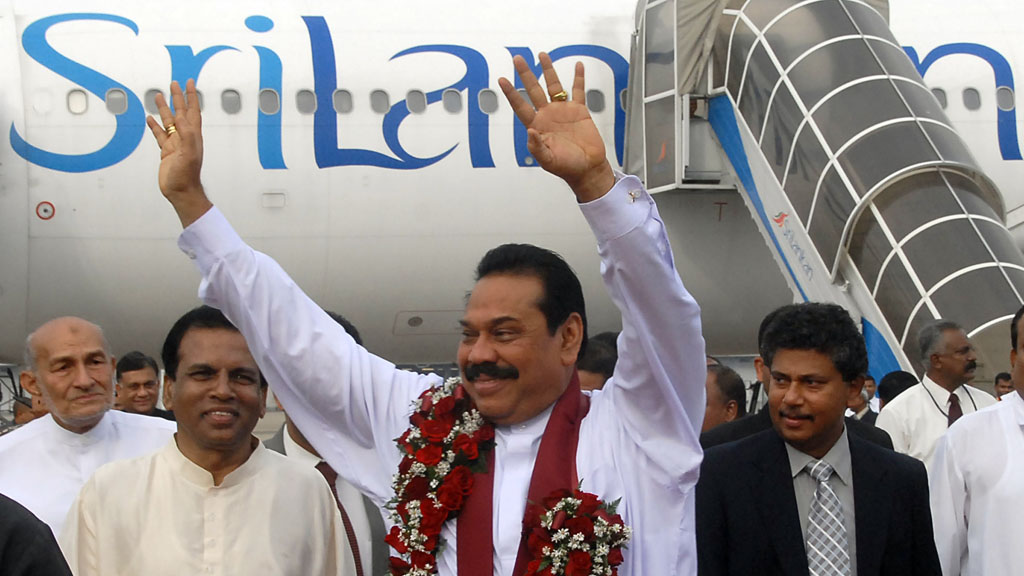Sri Lanka: would you holiday at a mass grave?
The white sand of Sri Lanka’s beaches is a lure for thousands of tourists every year – but dig a little deeper and there are many unanswered questions hanging over the country’s tourist industry.

Tourism is big business in Sri Lanka. Receipts from tourism nearly doubled between the end of Sri Lanka’s civil war and the end of 2011 – up to $1.4bn.
The direct contribution of tourism is estimated to be 3.8 per cent of Sri Lanka’s total GDP, and is forecast to rise by 7.8 per cent in 2013.
And the Sri Lankan government has big plans ahead for the industry. In the country’s five-year plan for the sector it lists key objectives as: increasing tourist arrivals from 650,000 in 2010 to 2.5m in 2016, attracting $3bn of direct foreign investment over five years, and increasing tourism-related employment four-fold to 500,000 by 2016.
{“dataSourceUrl”:”//docs.google.com/spreadsheet/tq?key=0AsCgBt4b6m7UdFFyc21pZHdNV2M0aHpROTJzOVBjTGc&transpose=0&headers=1&range=A1%3AC13&gid=3&pub=1″,”options”:{“vAxes”:[{“useFormatFromData”:true,”title”:null,”minValue”:null,”logScale”:false,”viewWindow”:{“min”:null,”max”:null},”maxValue”:null},{“useFormatFromData”:true,”minValue”:null,”logScale”:false,”viewWindow”:{“min”:null,”max”:null},”maxValue”:null}],”titleTextStyle”:{“bold”:true,”color”:”#000″,”fontSize”:16},”booleanRole”:”certainty”,”title”:”Sri Lanka Tourism – arrivals”,”height”:500,”animation”:{“duration”:500},”legend”:”right”,”width”:730,”focusTarget”:”series”,”hAxis”:{“useFormatFromData”:true,”title”:”Month”,”minValue”:null,”viewWindowMode”:null,”viewWindow”:null,”maxValue”:null},”isStacked”:false,”tooltip”:{“trigger”:”none”}},”state”:{},”view”:{},”isDefaultVisualization”:false,”chartType”:”ColumnChart”,”chartName”:”Chart 1″}
(Graph: Sri Lanka tourism arrivals 2012-2013. Source: Sri Lanka Tourism Development Authority)
So how is the government going to do this? Amongst a list of ideas, including making it easier for foreign organisations to invest in the country and international online marketing campaigns, is “new destination promotion”.
The “new destination promotion” section of the plan reads as follows: “Implementation of flagship infrastructure projects for development of the tourism zones on the western and eastern coastal belt has already been undertaken.
“This will cover areas such as Arugam Bay, Trincomalee, Kalpitiya, Negombo, Dedduwa, Galle, Mullaitivu and Hambantota.”
Nothing unusual about that on first glance – but take a closer look. Two of these locations stand out. One is Hambantota – a fishing village where Sri Lankan President Mahinda Rajapaksa grew up, which has had billions of dollars of investment since he was elected president in 2005.
The other is Mullaitivu. The final days of Sri Lanka’s bloody civil war were fought out around Mullaitivu – a fishing village that served as a stronghold for the Tamil Tigers movement.

It was on a strip of coastal land to the north of Mullaitivu that the Tamil Tigers staged their final resistance.
Around 130,000 Tamil civilians were trapped on the ever-decreasing shard of land occupied by the Tamil Tigers, as the government closed in. The Tamil Tigers have been accused of various war crimes, including preventing civilians from leaving so they could be used as human shields.
The military’s final assault on this area of land is believed to have led to the death of thousands of civilians. The United Nations has estimated that 40,000 people died in the final weeks of the war, most as a result of government forces’ gun and mortar fire.
Evidence revealed by Channel 4 suggests the military engaged in summary executions of prisoners, the execution of people who had surrendered, sexual violence and the deliberate targeting of civilians.
Video and audio experts appointed by the UN spent months verifying the videos as authentic, though the government of Sri Lanka maintains they are fake.
Yet Mullaivitu is one of the zones designated for government tourism development.
‘Community-based development’
And it can easily do this because the military, which has taken an increasing role in Sri Lanka’s tourism industry, took control of large areas in the Tamil dominated north after it vanquished the Tamil Tigers.
In a recent news item posted on the Ministry of Defence and Urban Development’s website members of the Sri Lanka Tourism Development Authority were quoted as saying that the area between the Nanthikadal lagoon (the site of the alleged massacre) and the Nayaru lagoon further south were to be developed for “community based tourism”.
“Only state-owned land will be utilised in the tourism development process in Mullaitivu,” the article said.
Channel 4 News has been allowed into Sri Lanka for the first time in four years. Follow the team's progress here.
The “continued land seizures by the military”, the International Crisis Group says, have led to more than 90,000 people remaining displaced within the north and east of Sri Lanka.
Nearby is one such military-run tourist location – Lagoon’s Edge. The holiday bungalow, which consists of three air-conditioned rooms, a living area, pantry and garden area, is run by the Sri Lankan army.
“All meals and services are supplied by the Sri Lankan army” the lodge’s Facebook page says. You also need to be recommended by a Sri Lankan army official in order to book a holiday.

Lagoon’s Edge is relatively small but the military’s involvement in tourism is thought to be huge. According to the Sri Lanka Campaign for Peace and Justice, the Sri Lankan government owns two airlines, 11 hotels and resorts, a ferry service, a 180-acre farm, three cricket stadiums, a golf course, and two whale-watching businesses.
Additionally, major Sri Lankan companies are linked to the family of President Rajapaksa, himself accused of war crimes as the ultimate authority in the country at the end of the civil war.
The chairman of Sri Lankan Airlines, an airline that serves 64 destinations in 34 countries, is Nishantha Wickramsinghe, the brother in law of President Rajapaksa.
More than 100,000 British tourists visited Sri Lanka last year, according to data from the Office of National Statistics.
And with Sri Lanka named as British Airways’ top destination for 2013, and the publicity from the Commonwealth heads of government meeting, President Rajapaksa’s dynasty may well achieve the growth in tourism it desires.




